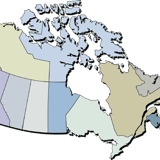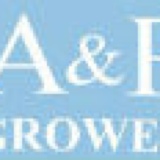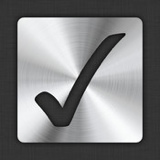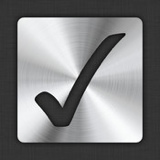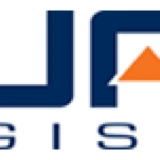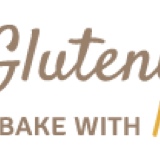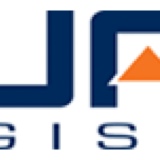Information
-
Project Assignment Number
-
Audit Title
-
Client / Site
-
Prepared by
-
Personnel
Client Information
-
Company Name
-
Address
Contact
-
Contact Person
-
Position or Title
-
Phone Number
-
E-Mail
-
Photo of Location
Certifications
-
- Certified Organic
- ISO 9000
- ISO 22000
- CFIA Compliant
- Provincial Inspected
- HACCP Compliant
-
Certifying Body
- FoodSafe
- NFSTP
- Provincial
- County
- Private
-
Additional Information
HACCP System
-
HACCP Plan in Place and Operational?
-
HACCP Plans must be sent to HACCCanada for Approval.
Procedural
-
Critical Control Point
-
Standard Operating Procedures
-
LOGS
-
HACCP Committee?
-
Committee Names
Receiving & Shipping
-
Why:
Potentially Hazardous Foods (PHFs) need to be delivered at the proper temperature so that bacteria can’t multiply. Damaged packaging may be a sign that food is contaminated. Labels will identify food sources and ingredients. Food stored properly will prevent cross- contamination, and keep bacteria from multiplying.
Check that:
The receiving area is clean.
The delivery vehicle is clean & there are no chemicals transported with the food.
Frozen foods are frozen solid, and do not show evidence of thawing and refreezing.
(Common signs of thawing and refreezing are large ice crystals on the surface, and frozen juices or liquids in the package.)
Take temperature of PHF with clean calibrated thermometer. Cold foods must be less than 4°C. Hot deliveries need to be greater than 60°C.
Food doesn’t show signs of spoilage.
Product packaging is not damaged exposing food to contamination.
Cans do not bulge, leak, or have creased seams.
There are no insects, insect eggs, dirt, rodent droppings, or other contaminants.
All products are properly labeled with the name and address of the manufacturer, and
the ingredient statement.
Food is stored properly as soon as possible. Protect Ready-to-Eat foods from raw
foods. Store raw foods under Ready-to-Eat foods, and separate from raw foods.
All products are within their “use-by” date
RECEIVING
-
Food items are from Approved Source
-
Temperature of Delivery Vehicle recorded
-
Deliveries are Received at non-peak times, not left on dock?
-
Sanitation of Trucks Checked and Logged
-
Pallets are Properly Labelled and Dated
-
Food is checked for Thaw and Freeze
-
Food is Inspected before being placed into Storage
-
Evidence of Cross Contamination
-
Pallets Observed for Cleanliness and potential for cross contamination.
-
Loading Dock Sanitation Condition
-
Food Deliveries are kept at 6 inches off Floor as per regulation.
Temp Checks
-
Temperature checks and logs.
-
- Compressor
- Ambient
- Probe
-
Location
-
Average amount of time of refrigerated product in ambient temperature.
RECALL AND REJECTION OF GOODS
-
Policy in place for RECALLS
-
Documentation Maintained for Recalls?
-
Segregated Area for Recalls?
-
Policy in place for Rejection of Goods
-
Documentation Maintained for Rejection of Goods?
SHIPPING
-
Pallets are Properly Labelled and Dated
-
Average amount of time of refrigerated product in ambient temperature.
Temp Checks
-
Temperature checks and logs.
-
- Compressor
- Ambient
- Probe
-
Location
-
Sanitation of Trucks Checked and Logged
-
Pallets are Properly Labelled and Dated
-
Loading Dock Sanitation Condition
-
Food Deliveries are kept at 6 inches off Floor as per regulation.
-
Evidence of Cross Contamination
-
Food is Inspected before being placed into Vehicle
Cold Storage
-
Why:
Bacteria can multiply at warm temperatures. Store and display food at cold temperatures to prevent bacteria from multiplying. Protect food from contamination, and Ready-to-Eat (RTE) food from cross contamination.
For all foods
Make sure indicating thermometers are correctly placed and working
properly in cold holding units.
Check PRODUCT with calibrated clean and sanitized thermometer at
determined frequency.
Keep the cold holding unit at 4°C or colder.
Place prepared food into the cold holding unit as soon as possible.
Do not mix old food with fresh batches of food.
Do not overload the cold holding unit.
Separate raw from RTE, and raw from raw (example: beef over chicken)
Cold Storage
-
Location
-
Type or Model
- Cooler
- Refrigerator
- Display
- Freezer
- Freezer Walk-in
- Freezer Drive -In
-
FIFO Maintained
-
Raw and Cooked products are stored as to prevent Cross Contamination
-
Select date
-
Condition
-
Corrective Action Required
Ambient Storage
-
Temperature is within regulated levels?
-
Evidence temperatures are monitored and recorded
-
Adequate Air Circulation
-
Food and Supplies are maintained at 6 inches off floor
-
FIFO Maintained
-
Food is stored at least 18 inches from sprinkler heads
-
Storage area is well lit
-
Protective light shields cover all light sources
-
All food is labelled and dated
-
Bulk foods are labeled with common name if not in original container
-
There is no bulging, dented or leaking canned goods in storage
-
Evidence of leaks and moisture
-
Food is protected from cross-contamination
-
Floors are clear of debris, boxes and hazards
-
All surfaces are clean
-
Chemicals are stored away from food products
Cross-Contamination
-
Biological Hazards are Minimized
-
Chemical Hazards are Minimized
-
Physical Hazards are Minimized
-
Allergenic Hazards are Minimized
Retail Food Service
-
Detail Flow of Food
PREPARATION
-
HOW TO CALIBRATE THERMOMETERS
Thermometers should be calibrated whenever they are dropped, before first use, and when going from one temperature extreme to another.
Temperature is a critical measurement for ensuring the safety and quality of many food products. Whether monitoring temperatures thermometer calibration is essential. The validation, verification reassessment section of the Hazard Analysis and Critical Control Point system specifies that instruments used for monitoring critical control points must be calibrated.
Sanitize thermometers before using and in between uses. To clean and sanitize the thermometer, wash it in hot, soapy water, rinse, and wipe down with an alcohol pad or use a sanitizing solution appropriate for food contact surfaces. -
Evidence of Calibration
-
Logs for Calibration of Thermometers
-
Color Coded Cutting Boards
-
Multiple Cutting boards to prevent cross contamination<br>
COOKING
-
Why:
Harmful bacteria and parasites can cause illness if foods are not cooked to proper temperatures for a specified time.
Use a clean and calibrated thermometer to check the final cooking temperature.
Specify each food/equipment/temperature
Complete the table for the foods and equipment used:
Poultry - stuffed meat, seafood, or poultry - stuffing containing meat, seafood or poultry - traditional, wild game meat - casseroles containing PHF
74°C. 15 seconds
Pork, - game meat – meat – ground or restructured meat or seafood – injected meat
70°C. 15 seconds
Other PHF requiring cooking
63°C. 15 seconds
Rare roast beef and rare beef steak
55°C. 15 seconds -
Temperature Probes used
-
Logs for Cooking maintained
HOLDING
-
Why:
Bacteria can multiply in food if it is held at temperatures between 4°C and 60°C
Keep food above 60°C, or below 4C, check with calibrated clean and sanitized thermometer at determined frequency.
Protect food from contamination.
Prepare and cook only as much food as needed.
Do not mix old food with fresh batches of food.
Follow manufacturer’s directions for hot holding equipment operation.
Do not overload holding equipment – follow manufacturer’s directions. -
Temperature Probes used
-
Logs for Cooking maintained
COOLING
-
Why:
Cooling food too slowly can allow bacteria to grow or toxins to be produced, causing foodborne illness. It takes longer to cool large batches of food. -
Temperature Probes used
-
Logs for Cooking maintained
RE-HEATING
-
Why:
Bacteria can survive and multiply in foods during reheating, unless the temperature reaches 74°C quickly. Reheat to kill bacteria that could have multiplied when it was held or cooled.
Foods for hot holding that have been previously cooked & cooled:
Reheat rapidly to 74°C within 2 hours without interruption.
Use a calibrated thermometer to make sure that 74°C is reached in the center
of the food each time food is reheated.
Do not reheat more than one time.
If using a microwave, stir, rotate, & allow it to sit for 2 minutes.
Commercially prepared, hermetically sealed foods for hot holding reheat to
60°C. -
Temperature Probes used
-
Logs for Cooking maintained
Warewashing
-
Type
Sanitation
-
Why:
Remove bacteria or viruses that may cause foodborne illness from food contact surfaces.
Clean and sanitize utensils and equipment:
After each use.
Every 4 hours if used to prepare Potentially Hazardous Foods (PHF) on a
continuous basis.
Clean and sanitize utensils and equipment between preparing raw and
Ready-to-Eat foods.
EQUIPMENT and BUILDING MAINTENANCE
-
Building meets local building codes
-
Floors, walls and ceiling meets local safety codes
-
Food contact surfaces meet safety standards
-
No evidence of flaking paint
-
Water Quality meets Safety Standards
-
Regular Maintenance on building
-
Regular Maintenance on critical equipment
-
Inoperative equipment has been repaired, replaced or removed
CHEMICALS
-
Cleaning compounds and sanitizers meet standards
-
Concentrations meet standards
-
Chemicals are properly labeled
-
Chemicals are properly stored
POWER EQUIPMENT
-
Only approved equipment is used
-
Power Equipment is clean and maintained
-
Power equipment shows no signs of fluid leaks
UTENSILS and EQUIPMENT
-
Utensils for food handling are clean
-
Drawers are clean
-
Racks are clean
-
Equipment is covered when clean and not in use
-
Pallets are maintained and clean
DAILY CLEANING
-
Food contact surface cleaning schedule in place
-
Floor and walls cleaned regularly
-
Deep cleaning schedule in place
-
Sanitary Condition of Facility
GARBAGE STORAGE and DISPOSAL
-
Refuse and garbage containers are clean and covered when not in use
-
Garbage containers are emptied as necessary
-
Boxes and containers are removed as necessary
-
Dumpster is located not near access to facility
-
Dumpster lids are closed
-
Dumpster area is clean
Personal Hygiene Practices
EMPLOYEE HYGIENE
-
Why:
Unclean hands can transfer bacteria and viruses to food, and cross-contaminate foods and food contact surfaces.
Food handlers must wash their hands:
Before starting work.
Before putting on or changing gloves.
After using the restroom, (use the restroom sink).
After touching their hair, face or body.
After eating, drinking, smoking, or touching chewing gum.
Upon entering a food prep area.
After cleaning or taking out the garbage.
After touching anything that contaminates the hands.
After using chemicals. -
Hands are washed at critical times and places
-
Staff only wash hands in handwash sink
-
Employee Health Poster available
-
Employees wear appropriate uniform including proper shoes
-
Hair restraints are worn
-
Fingernails are trimmed
-
Jewelry is restricted,
-
Gloves are changed at critical times and places
-
Open sores, cuts, or bandages on hands are completely covered while handling food
-
Staff beverages are covered with a lid and stored away from food prep areas
-
Eating, drinking or Chewing gum are observed only in designated areas away from food prep areas
-
Staff take appropriate action when coughing or sneezing
-
Disposal tissues are used and disposed of when coughing or blowing nose
FACILITIES
-
Hand wash stations available
-
Soap dispensers available with adequate supply
-
Paper towel dispensers with adequate supply
-
Sanitizing solution available in critical areas
-
Hand Washing signage displayed
-
Staff lockers available away from food prep area
Flow of Food
-
Describe Processes and Flow of Food
Pest Control
INTEGRATED PEST CONTROL
-
Written integrated pest control policy in place
-
Contracted to Pest Control company
-
Company Name
-
Contact Details
-
Reports available
-
Date of last inspection
-
Evidence of pests?
-
Building restricts access to pests
Documents
-
Staff Food Safety Certification
-
Add media
-
Pest Control Contract
-
Add media
-
HACCP Plan
-
Add media
-
Hygiene Policy
-
Add media
-
Food Safety Training Policy
-
Add media
-
Inspection Report from Regulatory Authority
Health Authority
-
Name of Authority
-
Last Inspection
-
Site Survey
-
Add media
-
Organic, Kosher or other Certification
-
Add media
-
Equipment Maintenance Contracts
-
Add media
Signatures
-
Facility is Approved
-
Person in Charge
-
Field Agent
